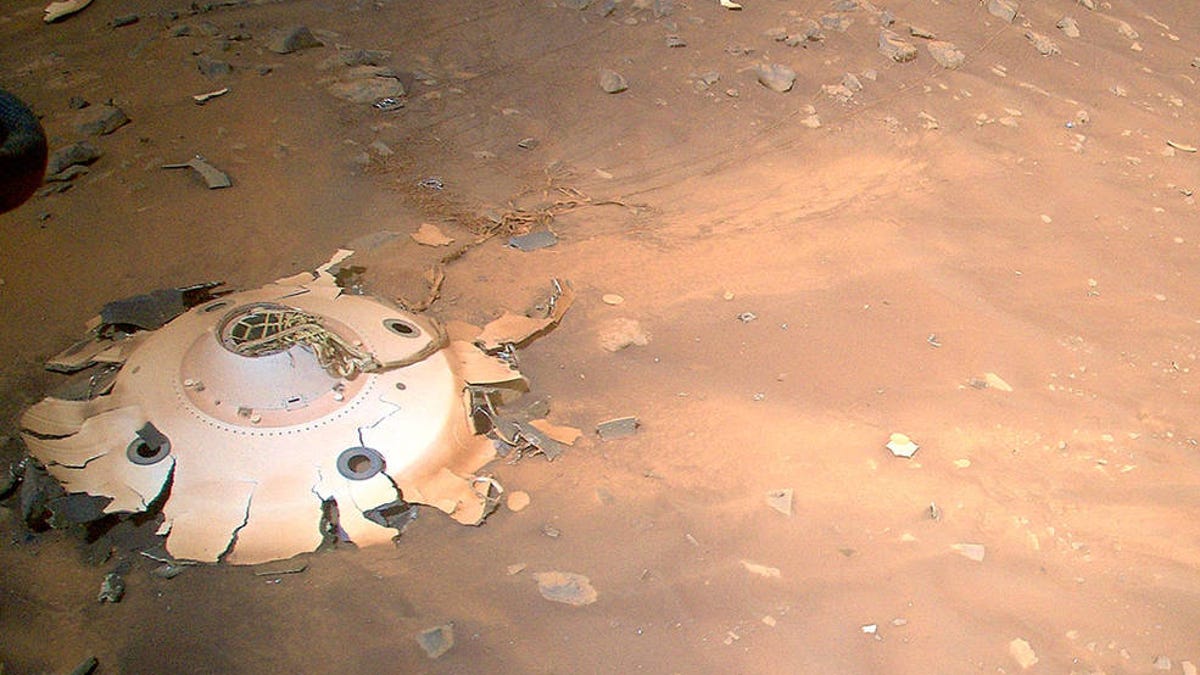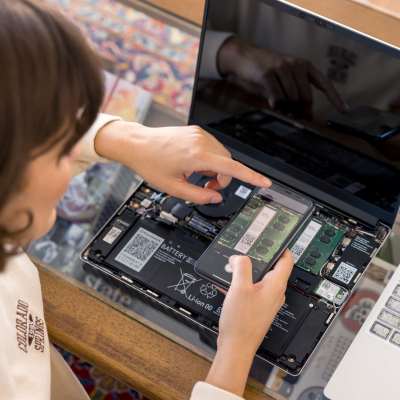Debris from NASA’s Mars landings is still creating little mysteries on the Red Planet
An image taken by the Ingenuity helicopter of the parachute and backshell crash site on Mars. Image: NASA/JPL-Caltech
NASA’s Mars rover Perserverance and its helicopter side-kick Ingenuity are searching the Red Planet for signs of ancient life but they’re also bumping into bit of debris from their own landing.
Detailed colored images taken by the Ingenuity helicopter show a discarded parachute and a backshell located 1km away from Perseverance’s landing site. These pieces were part of the entry, descent and landing (EDL) hardware that was discarded onto the surface of the planet when Perseverance landed on Mars on February 18, 2021. A NASA blog post showed that the debris findings did not stop there. After the parachute and backshell were identified, other smaller pieces of the EDL hardware were spotted on the planet.
SEE: NASA is sending more helicopters to Mars to help bring samples back
On April 16, 2022, NASA spotted unusually bright material in a Mastcam-Z image. The “bright material” was unidentifiable until the Perseverance Rover entered Hogwallow Flats Region, nearly 2km away from the crash, and returned a high-resolution, 360-degree Mastcam-Z panorama.
It was then that the EDL team was able to identify the bright material as multi-layer insulation (MLI), likely belonging to the skycrane. The material matched the pattern of the thermal blankets used on the spacecraft, which are made out of Perforated Aluminized Kapton (PAK) or Mylar, likely what was coming up as bright material in the images.
As more images from the Hogwallow Flats region were produced, more EDL debris was found, such as a piece of Dacron netting, commonly used in thermal blankets.
Mastcam-Z image shows the Dracon material found on Mars. Image: NASA/JPL-Caltech/ASU
Although the mystery of what the items were seemed to be solved, the question of how they got so far from the crash remained. NASA speculates that this could be a result of the energy from the crash ejecting the material into the air, the smaller pieces being expelled from the crash ballistically, or simply wind blowing the pieces away.
There are no concerns with the debris at the time. However, the team will continue to log the items as they are found. EDL debris is common in these expeditions as it was also found at the site of the Curiosity rover.
So apart from not being very tidy, what does this mean for Perseverance and future missions?
SEE: NASA’s cute space robots just hit another milestone
NASA said that with camera technology improving, future missions will be able to identify this sort of debris more easily.
“Engineers designing EDL hardware for future missions will need to consider the impact (literally) of their designs on both Mars and on the mission requirements,” NASA said.
“In the meantime, as Perseverance continues to collect samples for eventual return to Earth, the Perseverance imaging teams will continue to review images of the terrain for possible sources of EDL debris. The sampling teams will also continue to monitor potential sources of contamination to ensure the integrity of the returned sample cache.”




